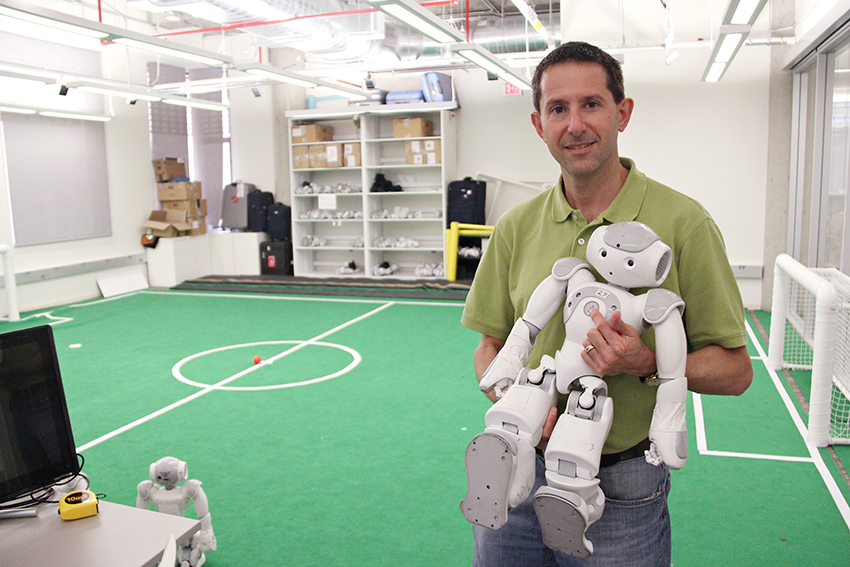Balance doesn’t come as easy to a robot as it does to famous soccer player Cristiano Ronaldo. UT professors Michael Mauk and Peter Stone are solving this inequality with computers and cerebellums.
Mauk and Stone are in two very different departments — neuroscience and computer science, respectively — but collaborate on projects to bring these fields together. Right now, they are working on bringing the cerebellum, the part of the brain that directs coordination, to Stone’s robot soccer team.
The two met when Mauk, the chair of the neuroscience department, first moved to UT-Austin. They realized both of their labs focus on learning and intelligence.
“We are doing many of the same things,” Stone said. “He’s just trying to simulate how the human brain works, and I’m trying to figure out how to get computers to do many of the same tasks the human brain does.”
According to Mauk, the cerebellum predicts where the body should move next. It takes inputs from the brain and the environment to carry out motor functions, such as reaching for a cup of coffee. It also helps correct and learn from mistakes, such as knocking the coffee cup over.
“It’s been known for a long time that the cerebellum learns, and we know that when it doesn’t work, we have trouble with coordination,” Mauk said. “We do experiments trying to ask how those two fit together.”
Mauk bridges the gap between lab experimentation and computation. His lab does experiments involving brains and behavior, while simultaneously modeling the results with math and computer simulations.
“We are trying to understand the cerebellum well enough to model one in a computer,” Mauk said. “That’s when I’m done, and I can go fishing.”
The idea of intelligence expands beyond the human brain.
Stone, a professor in the department of computer science, focuses on artificial intelligence, or AI. His overall research goal is to create autonomous agents — including robots, software programs and autonomous cars.
One of his most famous projects is his robot soccer team, UT Austin Villa. Stone chose soccer because he played the sport, and soccer offers real-world interpersonal situations for robots. There is an international community around robot soccer — teams from over 31 countries competed in RoboCup 2015, a world cup for robotic soccer.
“I figured if I was going to spend long hours in front of a screen trying to get my Ph.D., it might as well be in something I love,” Stone said. “Soccer is the perfect testbed task for artificial intelligence planning because you have a set of teammates and a set of adversaries.”
The two scientists draw insights from each other’s work. Stone wondered if the learning ability of a working cerebellum model could help improve the learning in his machine learning algorithms. Mauk also hoped Stone’s algorithms could help him improve his model.
Their collaborative work has resulted in two publications and aims to make computers. The two professors have even more planned for the future.
Their goal is to get the cerebellum simulation that Mauk’s lab is working on into Stone’s robot soccer team. This could help the robots with a component crucial to dominating competition on the soccer field: balance.
“One of our goals is to help their robots balance, which is something the cerebellum does for us: helps us not fall down by predicting there’s about to be a problem and anticipating a solution instead of just reacting,” Mauk said. “For example, his robots fall down a lot when they collide with each other, and what we do, because of our cerebellum, is lean into the collision so we can keep our balance.”
According to Stone, making a robot soccer team that can anticipate balance correctly, just like a human does, is a step toward more sophisticated, intelligent technology.
“In the world of robot soccer, the long-term goal is to have humanoid robots that can beat the best real world cup soccer team on a real soccer field by 2050,” Stone said.
Maybe one day, Ronaldo will meet his match.















